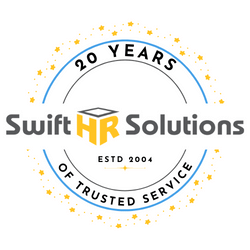The Ever-Changing Employment Landscape: Multi-State Hiring Requirements and Pitfalls
Businesses have made a seismic shift towards remote work. During the global pandemic, companies were hiring talent wherever they could find it, doing it quickly, and often skipping compliance steps. States are finally catching up with the surge in remote hiring, and are becoming aware of workers who are in their states. Moving beyond a reactive stance, they are actively working to change the regulatory framework and address the complexities of today. In this post, we’ll look at what has changed and what you need to do for your business.
Changes: States Catch Up to Remote Hiring
Time has unveiled oversights in how remote employees were onboarded, and many were never properly registered. When you hire someone you must adhere to the hiring, tax, and employee protection requirements of the state they are in. States have adjusted their nexus requirements, recognizing the changing dynamics of the contemporary work environment.
Nexus requirements refer to the presence that a business must have in a state for that state to impose its taxes and regulations. Historically, physical presence within a state was the primary factor triggering nexus. However, starting with e-commerce and continuing with the rise of remote work, states have adapted their nexus requirements. There are now a couple of types to consider:
Physical Nexus: This is the traditional form, where a physical presence in a state, including offices and employees, triggers the state's jurisdiction over the business
Economic Nexus : This is based on the level of economic activity a business conducts in a state. It can be triggered by factors such as the volume of payroll, the volume of sales, or the total revenue generated within the state
Recent Trends: Strategic Limitations
When remote hiring first took off, companies were hiring employees wherever they could find them, and figuring out the compliance afterward. Now, more businesses are limiting the states where a remote employee can work from. Shannon Swift of Swift HR Solutions, Inc notes, “What we are seeing more and more is companies are being more strategic with where we are allowing employees to be. They are saying “these are the states you can live in.” and setting limits.”
California, WA and OR tend to be the most progressive in terms of being very employee friendly, but other states often have unique requirements. For example Montana is the only state that is not at will employment, and other states require a high pay frequency which does not allow for a monthly pay period. Many cities as well have unique requirements for employers and rights for employees. The details can be mind-boggling. It is important to understand these rules beforehand so you can decide whether you want to hire someone in these locations.
What you need to do
If you hired people remotely, make sure you know you did it right, and this is different for each state. Dig back in and do an audit to understand whether you are properly set up in those places you need to be and are in compliance. “These changes open the door for the state to put in place taxes and other requirements on you.” says Michelle Bomberger of Equinox Business Law. “What states are you in, and what are your nexus triggers in these states? You need a strategy to make sure that you know what you have to do in each state. Things like hiring requirements, leave requirements, and posters that you have to hang up in home offices are all unique to the states, and you have got to know what they all are.”
For future hiring, build a strategy around where employees can be located, and reach out to HR first. “In the past, we would often have a hiring manager say, “hey, we just hired somebody in the state” and then we would have to jump in and make that work” says Shannon. “I think companies should be doing that in the reverse. Instead, say “Hey, we are looking at hiring someone who is in this state, is that ok?””
The post-pandemic era demands a meticulous and strategic approach to multi-state hiring. As the legal landscape continues to evolve, businesses must adapt, ensuring that every remote hire is a step toward growth rather than a potential compliance headache.
Need help setting up your multi-state strategy? Let’s talk!

